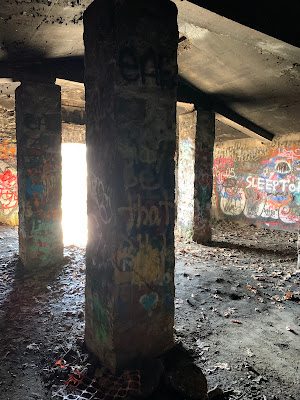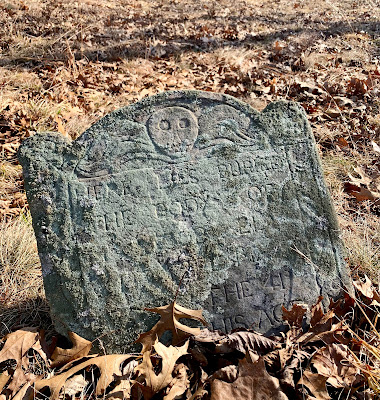Does a tentacled, horned, snake-like monster haunt Nagog Pond in Littleton, Massachusetts? There aren't a lot of legends about lake monsters here in the Bay State, so I was excited when I first stumbled upon the possible Littleton lake monster a few years ago. It has been lurking in the back of my mind since then, and I finally decided to do a little more research.
Nagog Pond is on the border of Littleton and Acton, and was formerly called Nagog Lake. It's a kettle hole pond, meaning it was formed thousands of years ago when the glaciers melted at the end of the last ice ice. Kettle hole ponds are so-called because they hold water just like a tea kettle.
I've seen a few explanations for the name "Nagog," which is apparently derived from a word in one of the local Algonquin dialects. Some people say nagog means "corner," since the lake is in one corner of Littleton, and other say it is derived from "magog," which means water. As an FYI, Nagog is pronounced NAY-gog. Nagog Pond was used for fishing and recreational sailing in the past, and it now supplies drinking water to the nearby town of Concord.
 |
| Illustration from Uriah Jewett and the Sea Serpent of Lake Mephemgagog (1917) |
To understand the monster, you first need to know a little local history. Littleton was originally established in 1645 as Nashoba Plantation, a village for local Nipmuc and Pennacook Indians who had converted to Christianity. It was one of six so-called Praying Indian Villages that were created in Massachusetts by the Puritan minister John Eliot. The term "plantation" here does not refer to a large farm based on slave labor like you would find in the old American south, but instead to a farming settlement. The Praying Indians from Nashoba and the other villages were forcibly moved to Deer Island in Boston Harbor during King Philip's war by their English neighbors who thought they would join Philip (Metacomet) in his rebellion. Many of the Indians died from starvation and exposure on Deer Island, and the rest intermarried with English settlers or gradually joined other Indian groups after the war ended. All the Praying Indian villages eventually became English towns.
The last Indian to live in Nashoba was Wunnuhhew, also known as Sarah Doublet, who returned to the village after King Phillip's War. Doublet sold the remaining 500 acres of Nashoba in 1734 to cover the cost of her care when she was elderly. She died two years later.
Sarah Doublet is one of the topics in John Hanson Mitchell's 1998 non-fiction book Trespassing: An Inquiry into the Private Ownership of Land. This is where the monster comes in. Mitchell's book is the only place I've found reference to the Nagog Pond monster. According to Mitchell, Sarah Doublet and the other Indians at Nashoba believed the pond was home to a large monster named Ap'cinic. Ap'cinic was a horned water-serpent, and also had tentacles that it used to probe the shoreline for prey. The creature seemed to have a particular appetite for human intestines.
"She knew the terror that flies by night, the fiery worm, the gnashing devils, and the legends of the tentacled, horned monster who would reach up out of the dark waters of Nagog at certain times and draw the entrails of passing villagers down into the depths." (Mitchell, Trespassing, p. 23)
Mitchell talks about Ap'cinic's tentacles a few other times. An earthquake struck the area in the 1600s, and he describes the monster reacting to it: "... the waters of Nagog churned and roiled and swelled, and the horned water beast who lived most of his time unseen beneath the surface rose up and spirited his vicious hunting tentacles through the drying air." (Mitchell, Trespassing, p. 65)
At one point in the book, Mitchell encounters some teenagers illegally swimming in Nagog Pond. He tries to warn them away by telling them about Ap'cinic:
"It had these long tentacles, they say, and a huge gnashing beak and horns on its head. At night it would reach up and feel along the shore for people, fishermen, swimmers, things like that. If it caught you, it would either drag you down into the waters, or worse, slice you open and suck out your intestines."
The teenagers were quiet for a minute.
"You mean it would like eat you alive?" Tracy asked.
"Yeah, suck out your inner body parts while you clung to a tree."
"Cool," she said. (Mitchell, Trespassing, p. 154)
The teenagers are intrigued, but not too worried. After all, is the story about Ap'cinic even true? Was there ever a monster lurking in the pond? You may wonder the same thing yourself.
To be clear, Trespassing is marketed as a non-fiction book. It is about the history of Littleton, Massachusetts, about people who actually lived, and even about the dry business of town governance. Town hearings about zoning are a key part of the book. Ap'cininc is only a very small part of Trespassing.
 |
| From Native People of Southern New England, 1500 - 1650. |
Sarah Doublet (Wunnuhhew) really lived in Nashoba, but we don't know much about her life, and sadly Mitchell doesn't cite any sources for the legend of Ap'cinic. It's possible he made the story up. On the other hand, it's entirely possible that the Indians at Nashoba did believe a horned serpent lived in the pond. Horned serpents were part of the Alonquin cosmology. The anthropologist Kathleen Brandon writes:
"Among the manitou known to the Ninnimissinuok (i.e. New England Indians) was the giant horned or antlered, under (water) world serpent, a being familiar to other Algonquian-speaking people as well. Images of this fearsome underwater dweller sometimes decorated amulets, bowls, and other objects." (Kathleen Bragdon, Native People of Southern New England, 1500 - 1650, 1996, p.187)
So perhaps the Indians at Nashoba did believe a horned serpent lived in this particular pond, but John Hanson Mitchell doesn't present any concrete evidence they did. He doesn't explain where he found the name Ap'cinic, or why he thinks Ap'cinic had tentacles.
I think the word "manitou" is key to understanding what's happening with Ap'cinic. Manitou means spiritual power, or anything that has a lot of spiritual power. My hunch is that Mitchell is responding to the spiritual power he feels around Nagog Pond, and he's trying to tell the reader what it feels like for him, and what he thought it felt like for the Indians who lived there hundreds of years ago. Mitchell has written several books about the history of Littleton, and has a deep awareness of its history and geology. Ap'cinic is the sensation Mitchell feels when he is near the pond. Ap'cinic is how Mitchell experiences the spirit of the place:
"Back at the car I stood on the road for a while looking up at the hill, simply feeling the sensation. Nothing happened, nothing seized me by the throat and dragged me back into the swamps to draw me, struggling, into the murky depths. And below me at the pond, I could not see the slimy gleam of the blind, searching tentacles of the Ap'cinic, feeling along the shores for victims." (Mitchell, Trespassing, p. 109)
If you were to probe the depths of Nagog Pond with a camera, I don't think you would find any trace of a giant monster. But perhaps, if you were sitting in the woods by the lake on a still autumn night, with your phone silenced and your mind cleared from worries, you might catch a glimpse of Ap'cinic. Maybe it would look differently to you, and instead of a horned serpent you'd see a hairy humanoid wading along the shore, or a giant black bird flying overhead, or a strange glowing orb hovering above the water. Or maybe you'd just get the feeling of a sentient presence surrounding you.
The ancient Romans had a term for the spirit of a place: genius loci, or local spirit. Your belief in spirits as actual autonomous beings, or as a psychological metaphor, will depend on your intellectual temperament. But Ap'cinic may still hold a strange power, even if you think of him simply as a psychological experience:
"...a lake provides a ready-made metaphor for the Soul of the World, a symbol of the collective unconscious, an imaginative nexus where individual perception (or "misperception") and collective myth meet. Regardless of the actual characteristics of the lake, it is transformed by the Imagination into a reflection of the unconscious itself, becoming a dark, impenetrable, bottomless kingdom which does not yield up its dead. (Patrick Harpur, Daimonic Reality. A Field Guide to the Otherworld. 2003, p. 129)
That sounds intimidating, doesn't it? But perhaps less intimidating than a tentacled monster that wants to eat your intestines.




















